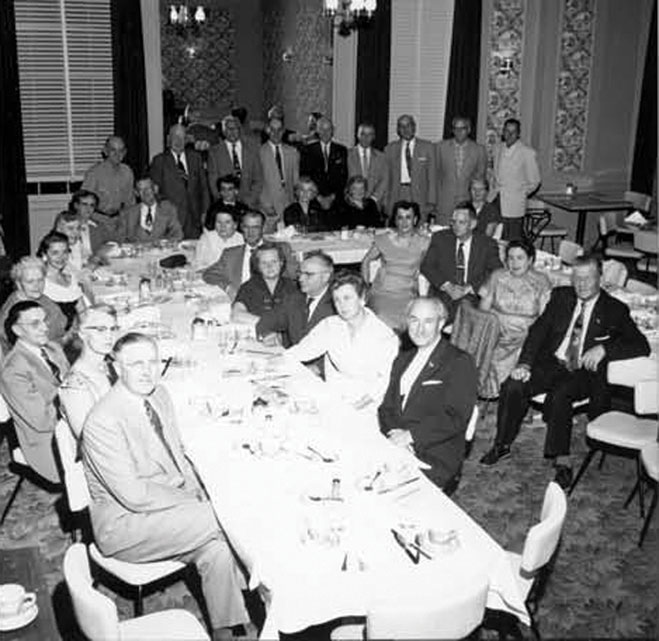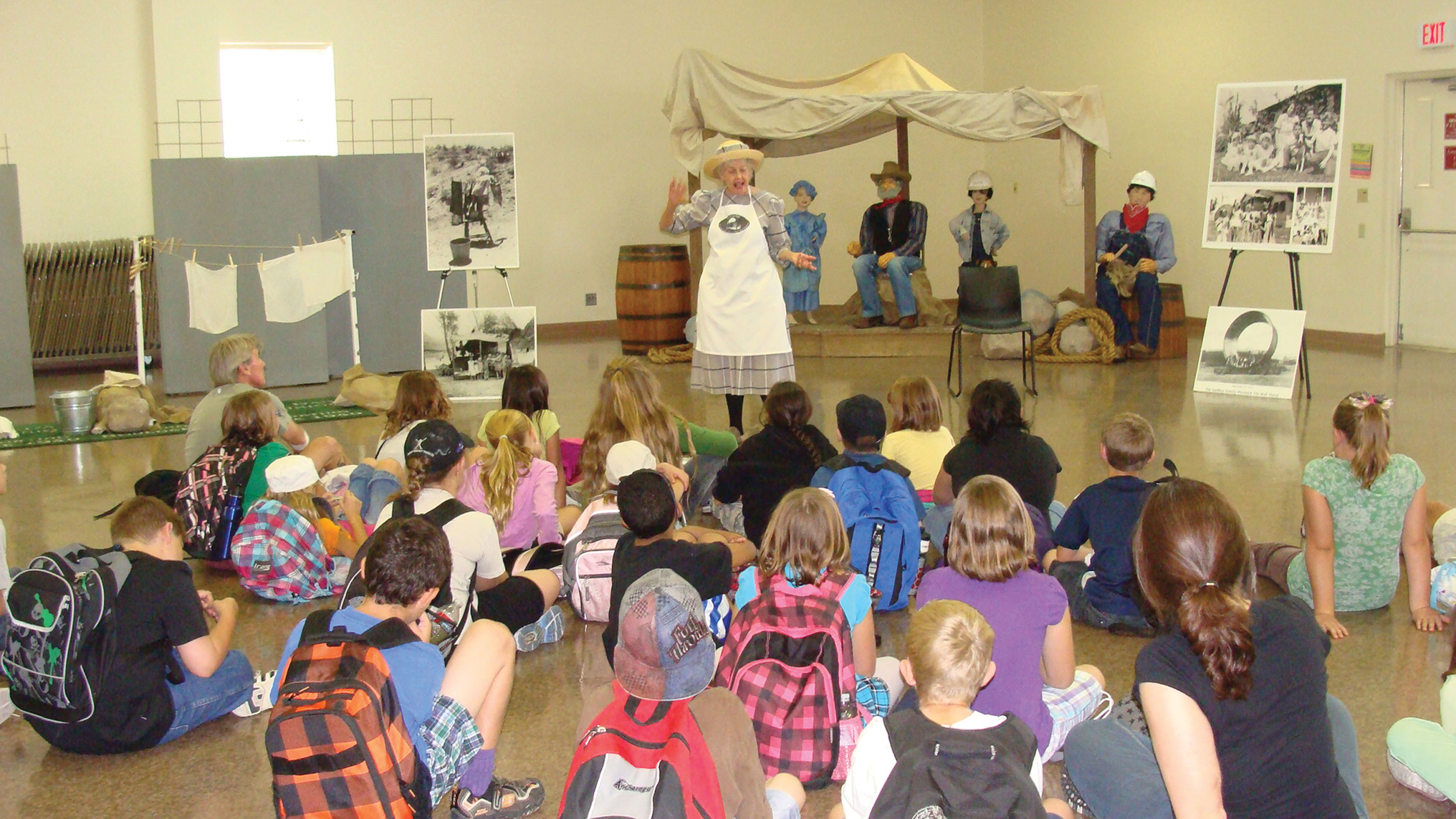
|
|
Boulder City Magazine® October, 2011 Issue
|
|
Cover Story
31’ers Reunion Luncheon and Educational Outreach
By Patty Sullivan
People often ask me to define the term 31’ers. What’s important to understand is that the term 31’ers has different layers to it. First and foremost is the “original” 31’er. The term 31’ers was coined for dam workers who came to this area in 1931 for the prospect of finding work on the Boulder Canyon Project which included all aspects of building Boulder (Hoover) Dam and Boulder City.
Housing was not yet in place for these folks. Many workmen and their families lived in tents along the Colorado River in Williamsville, a community named after the marshal who was hired to keep the peace there. Willliamsville earned the name of “Ragtown” as the word described what the community looked like.
Later, the term 31’er was used to describe those men who worked on the Boulder Canyon Project regardless of what their job classification was or when they came to work on the project. This layer of 31’ers is focused on the men who worked on the Boulder Canyon Project, but did not necessarily come in the year 1931.
Developing simultaneously in the 1930’s was the birth of our community, Boulder City. The federal government’s vision for the Boulder Canyon Project was that of a construction camp, not a thriving town with families. Many of the families that came were committed to making a life and home for which they could be proud of.
Your next layer of 31’ers are family members who did not work on the dam, but were focused on building the community with long-term plans in mind. Since Boulder City was every bit a part of the Boulder Canyon Project, those who worked to build the social structure of Boulder City became known as 31’ers too.
The last layer for the term 31’er is those who have lived in Boulder City for 31 years or more. It is understood that anyone who has lived in Boulder City this long has contributed to the fabric of our community.
in the following passage written by Dennis McBride for the book A Pictorial History of Hoover Dam. The essence of 1930’s Boulder City is described beautifully.
“In the late 1920’s and early 1930’s when notice was published that the government was hiring men to build a dam, the likes of which had never been seen before, the country was in the grip of a depression. The project seemed like H.G. Well’s science fiction—to span the mighty Colorado River in a narrow, dangerous, uninhabitable spot know as Black Canyon in an area of the country where thermometers frequently saw the 120 degree mark. Working conditions would be brutal: heat and dehydration, scaling cliffs, dynamite blasts, digging tunnels, freezing winds sweeping across the winter desert. And still men came. They came in droves. Though the work that would be required of them to build the mighty Hoover Dam was dangerous and hard, it was preferable to the ravages of the Great Depression.
And while these desperate men grabbed a the chance to work – living in tents, sleeping in the shade of rocks, and bathing in the muddy river – further down the Colorado was the reason for this immense project. Over 1.5 million acres of U.S. and Mexican farmland and orchards were being flooded by surges in the river; then suffering drought when the Colorado slowed to a trickle. The dam would control the flow of water, using a valley as a high reservoir storage basin.
With every huge bucket of concrete poured, every salt tablet consumed to stave off dehydration, every worried wife listening to the siren in the night, every crooked board pried from a crate and used to build a shanty, the story of Hoover Dam is a testimony to man’s courage and will to survive and provide for his family. Though the Bureau of Reclamation saw the pragmatic side of this amazing engineering wonder, the men who built the Dam, their faithful wives and their growing children saw a chance to have a home and a future.”
After the dam was completed, workman gathered annually to reconnect and reminisce about the creation of the great dam. The 31’ers Reunion Luncheon was invitation-only to those men who worked on Hoover Dam, influential people of the early days in Boulder City and their spouses. It was quite an exclusive group. They shared stories of the hardships of building the dam and the opportunity the dam work provided for a stable life during the nation’s Great Depression.
|
 |
|
31’ers Luncheon at Boulder Dam Hotel 1956
|
|
Today, you do not have to be a 31’er of any kind to attend the 31’ers Reunion Luncheon, and the format has been expanded to include a 31’ers Educational Outreach Showcase. This event honors those people who worked seven days a week, with only Christmas off, to build a dam that resolved flooding issues, provided electricity to the Southwest and created the Lake Mead National Recreation Area, as well as give thanks to those people who saw Boulder City as more than just a construction camp.
|
 |
|
Barbara Morris performs 31’ers First House monologue to elementary school children
|
31’ers Educational Outreach efforts support the Boulder City Master Plan Goal: “a Community that Embraces its Culture and the Art - Arts and culture should be an integral force in the city’s community identity, with a strong presence in its educational system, community celebrations and events, neighborhoods and public institutions.”
In support of this master plan goal, a group of dedicated Boulder City people known as the 31’ers Educational Outreach Team is committed to preserving our history to educate the future in a way that will span the generations. 31er Educational Outreach projects include: preserving historical material, establishing 31’er heirloom hollyhocks in the downtown area and planting the hollyhocks with school children to take home and a guided Boulder City Hoover Dam Museum tour with 31’ers storytelling, hands-on activity room for an enhanced museum experience. Where Garrett Middle School seventh grade students are treated to presentations by former teacher and Hoover Dam guide Pete Mayes and the “First House” monologue performed by Barbara Morris or Peggy Durfey, daughter of “original” 31’er Tom Godbey. The book “A Pictorial History of Hoover Dam,” 31’ers t-shirts, aprons and 31’er heirloom hollyhocks are sold to further 31’ers Educational Outreach projects.
The 56th Annual 31’ers Reunion Luncheon takes place on Saturday October 8th. This year’s event will be held at the Boulder Dam Hotel where the gathering took place in the early days. The event starts at 10 a.m. in the Hotel lobby where attendees can talk with 31’ers families. From here attendees will move to the restaurant for lunch and continued conversation. After lunch is the presentation “The Founding of Boulder City” by Peter Huntoon, and the debut of the newly created 31’ers Room. The event will culminate on the patio with skits by Mitchell Elementary School second grade students and 1930s song performances by the Boulder City Parks and Recreation Department Rising Stars.
To be included in the lunch portion of the event, $20 reservations must be prepaid by October 5th to be included in the lunch portion of the event. You can stop in the Museum at 1305 Arizona Street or call (702) 294-1988 to pay by credit card. Join the community in its tradition of honoring those who built Hoover Dam and Boulder City by attending this year’s 31’ers Reunion Luncheon and Educational Outreach Showcase on Oct. 8, 2011.
|
 Boulder City Magazine®
Boulder City Magazine®
688 Wells Rd #A
Boulder City, Nevada 89005
Phone (702) 972-0661
E-mail: BoulderCityMagazine@gmail.com

Web Site Design by Appleby Arts
Copyright © 2004 - 2011 - Boulder City Magazine - All Rights Reserved
E-mail Web Master at: webmaster@bouldercitymagazine.com
Disclaimer
|



